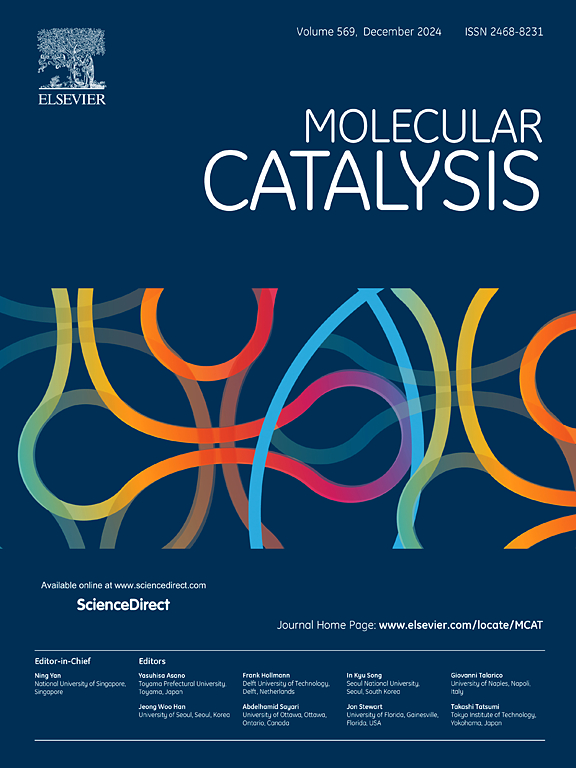PtCu合金气凝胶纳米催化剂对氧还原反应增强的应变效应
IF 4.9
2区 化学
Q2 CHEMISTRY, PHYSICAL
引用次数: 0
摘要
调整Pt基合金电催化剂的应变效应是提高质子交换膜燃料电池(pemfc)氧还原反应电催化性能的有效策略。其中,高效的PtCu合金气凝胶(PtCu AAs)具有可调节的Pt/Cu原子比,形成了细微的晶格收缩,以及电化学除合金过程产生了具有丰富活性位点的表面缺陷。制备的具有最佳应变效应和可达表面位点的Pt1Cu2 AAs催化剂的质量活性和比活性显著提高,分别为1.65 A/mgPt和3.96 mA/cm2,高于Pt1Cu1 AAs、Pt1Cu3 AAs和商用Pt/C催化剂,这是由于最佳应变效应和适度的晶格收缩。同时,Pt1Cu2 AAs表现出显著的稳定性。通过控制原子组成和电化学脱合金工艺,为设计具有表面应变和缺陷的高效ORR电催化剂提供了新思路。本文章由计算机程序翻译,如有差异,请以英文原文为准。

Strain effect of PtCu alloy aerogel nanocatalysts on the oxygen reduction reaction enhancement
Tuning their strain effect of Pt based alloy electrocatalysts is an efficient strategy to enhance the electrocatalytic performance toward oxygen reduction reaction (ORR) for proton exchange membrane fuel cells (PEMFCs). Herein, an efficient PtCu alloy aerogels (PtCu AAs) with adjustable Pt/Cu atomic ratio form a subtle lattice contraction, as well as the electrochemical dealloying process created surface defects with abundant active sites. The prepared Pt1Cu2 AAs catalysts with optimal strain effects and accessible surface sites displayed much-enhanced mass activity and specific activity of 1.65 A/mgPt and 3.96 mA/cm2, which are higher than those of the Pt1Cu1 AAs, Pt1Cu3 AAs and commercial Pt/C catalysts, respectively, originating from the optimal strain effect with the moderate degree of lattice shrinkage. Meanwhile, Pt1Cu2 AAs displayed a remarkable stability. This work offers a new strategy to design an efficient ORR electrocatalyst with surface strain and defects by controlling atomic compositions and electrochemical dealloying process for PEMFCs.
求助全文
通过发布文献求助,成功后即可免费获取论文全文。
去求助
来源期刊

Molecular Catalysis
Chemical Engineering-Process Chemistry and Technology
CiteScore
6.90
自引率
10.90%
发文量
700
审稿时长
40 days
期刊介绍:
Molecular Catalysis publishes full papers that are original, rigorous, and scholarly contributions examining the molecular and atomic aspects of catalytic activation and reaction mechanisms. The fields covered are:
Heterogeneous catalysis including immobilized molecular catalysts
Homogeneous catalysis including organocatalysis, organometallic catalysis and biocatalysis
Photo- and electrochemistry
Theoretical aspects of catalysis analyzed by computational methods
 求助内容:
求助内容: 应助结果提醒方式:
应助结果提醒方式:


